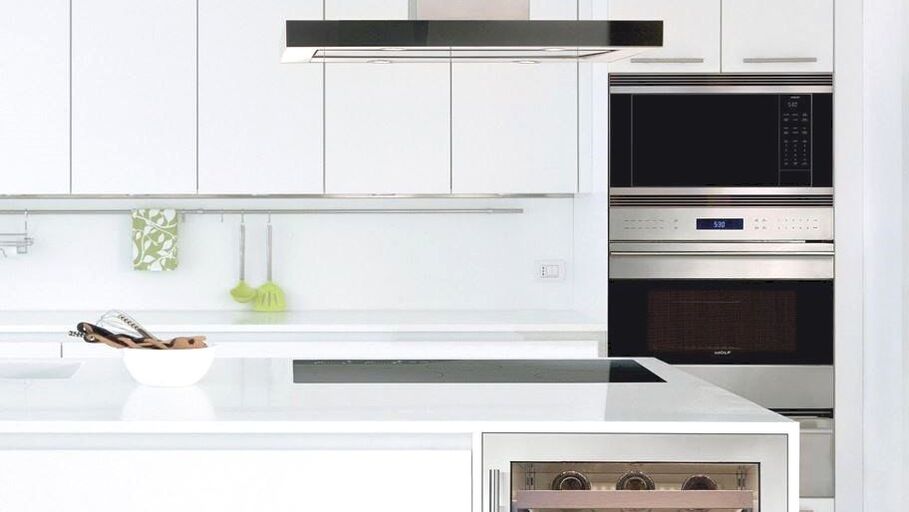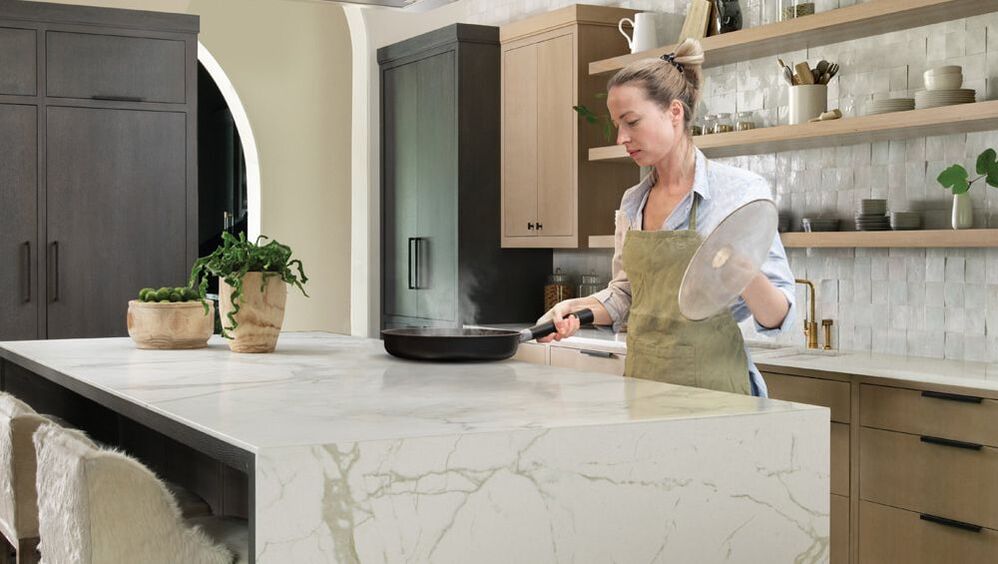|
Hello! We are so glad this post caught your attention. If you've been following us for awhile you know we've been big fans of the induction cooktop. They have so many positive advantages over radiant/indirect heat (gas or electric) cooking. However, there are also some negatives that also need to be addressed before you purchase your appliance. Below we're going to highlight some of the top pros and cons and then at the bottom we've tagged some great articles that will help you dive into this even deeper if you choose to do so! As with any choice you make in life, you are the only person that can make the best choice for yourself. This post and the articles included are intended to give you aspects to think about and then it's up to you to determine for yourself what is the best choice for you and your family. What's important to me might not be important to you and vice versa. We would love to hear your thoughts in the comment section below or you can privately contact us here. ADVANTAGES:1. Speed & Precision According to Consumer Reports, "No other cooking technology that we've tested is faster than the fastest induction elements - we're talking 2 to 4 minutes speedier than the competition to bring 6 quarts of water to a near-boil." (While getting used to the speed please be mindful that oil will heat quickly as well) With induction cooking, the heat level is every bit as instant as with gas and the induction elements can be adjusted to increments as fine as the chef needs, especially at the critical low-temperature end for things like gentle simmering. 2. Energy Savings According to the California Energy Commission, the Electric Power Research Institute found that induction cooking is very energy efficient. Part of the reason is that, “With this technology, up to 90% of the energy consumed is transferred to the food, compared to about 74% for traditional electric systems and 40% for gas.” 3. Ease of Cleaning The surface of the cooktop is very similar to an electric cooktop, so it's very easy to wipe clean, rather than having to remove the grates from the gas cooktop. The advantage over the similar glass electric cooktop, is that since only the vessel or cookware is heated and not the actual surface there is less "baked on" food to tend with. See resources below for a Step-by-Step guide to cleaning your Induction Cooktop. 4. Accessibility Induction cooktops are typically very thin (shallow) when compared to traditional radiant cooking appliances (gas and electric), so it is a strong choice when designing a Kitchen to be used by a homeowner bound to a wheelchair. They will be able to bring their legs under the unit and reach the burners without strain. disadvantages:1. Surface Pitting & Scratches Induction cooktops are made with glass ceramic surface which are susceptible to scratching as well as pitting, especially if sugar is melted on the surface. You want to be sure to be gentle with the top and avoid dragging pots and pans back and forth as well as trying to avoid using the surface as a countertop between uses. Depending on the thickness of the glass, it is possible to crack the glass surface so be careful not to drop heavy items on to the cooktop surface. 2. Pacemaker Interference People with cardiac pacemakers or other electronic medical implants are typically instructed to avoid sources of magnetic fields; there is medical research which suggests that the proximity to induction cooking surfaces is safe, but individuals with such implants should always check first with their cardiologists. 3. Need Specific Cookware The cookware you use on an induction cooktop needs to be of a Ferrous metal. The easiest way to figure out if your cookware would be compatible with an induction cooktop is to do the magnet test. If a magnet sticks to the bottom of your cookware, it should work, if it doesn't stick, it probably won't. If your cookware is not compatible and you decide you still want an induction cooktop, instead of buying a new set of cookware you can look into purchasing induction converter disks instead. See resources below for a great article on the top 8 best disks available. 4. EMF (Electromagnetic Field) Radiation This is a big concern, especially as our exposure is increasing in our homes with the increase in wifi, laptop and cellphone use. There is conflicting discussion on whether the amount of radiation exposure from induction cooking will hurt human health, but regardless, it is present, so it should be taken into consideration, just as the exposure with microwave use should be considered as well. Reducing the total EMF exposure we get is a big step toward overall health and wellbeing in our home. There is a great resource listed below that really gets into the nitty gritty of EMF radiation but for the purpose of this post, I want to make you aware that because of the way induction cooking works, you are exposed to some levels rather than if you were to choose an electric or gas cooktop. sUGGESTED TIPS IF PURCHASING INDUCTION:Below we will discuss some things you can do to reduce the exposure of EMF radiation as well as tips for maintaining the cooktop if you decide that the benefits outweigh the drawbacks for you and your family. To reduce scratches, you can place paper towels, parchment paper, newspaper, or a silicone sheet on top of the stove before cooking. These items will not burn as there is no transference of heat to a non-magnetic material. This is great especially if the bottom of the pans/pots are not completely smooth. That being said, you will want to try to use pots and pans that are not warped, scratched or damaged as this could allow EMF's to escape the cooking area. You should also try to only use cookware that is designed for induction cooking, when possible, as they are typically manufactured to absorb the EMF radiation and prevent it from escaping into the room. Another tip is to use cookware that is slightly bigger than the cooking zone to help prevent the EMF's to escape into the Kitchen and potentially be absorbed by your body. Also, when possible, using the "burners" that are at the back to increase the distance between the electromagnetic field and your body is a great idea. Metals are conductive and can carry the current of the electromagnetic field directly into your hand while you’re cooking, so try to stay away from using metal utensils and consider using an oven mitt or towel when handling the cookware to help break the current. Check out the EMF Academy resource below for more tips and info about EMFs. As they mention, your induction cooktop shouldn't be the highest on your list if you're concerned about the radiation in your home, working on decreasing your wifi, laptop and 5G use first is ideal. invisible cooktop = extra countertop spaceYou may remember that back in 2016 we attended an Industry Trend Night where Sapienstone was featuring this "new concept" of invisible cooking! Essentially it was an induction cooktop that was installed under the countertop so you didn't see the appliance at all and you were able to place your pots and pans directly on the countertop to cook. At the time, we were completely intrigued by the "idea" of it, but it was still in a beta type phase. Now, it's out of the concept phase and can be incorporated into your kitchen! This is fascinating because now, you essentially gain 30" or more back of useable countertop space!! Currently, this product doesn't work with Quartz so you would need to choose an all-natural stone granite or ultra-compact porcelain countertop for compatibility. You'll also want to use Pan Risers if you choose this invisible look to protect your countertop surface from direct heat and scratching. Below, you will see that we linked to a company that specializes in this called Invisacook. If you're interested in this particular unit, you'll be able to get a certified installer to hook this up for you. Ciot is a great location to work with as they sell both the hardware and fabricate the stone to make this an easy process for you, the homeowner. Before we wrap this post up I want to make it clear that, yes, as Kitchen designers we stay on top of what's out on the market, however, we believe that it's always best to consult with the experts that specialize in one area of focus, i.e. appliances, stone, hardware, plumbing, etc. We focus on Cabinet Design for Kitchens, and although we can lead you in the right direction for the rest of the elements, these other professionals focus solely on one area and therefore are not only aware of what's "new" and have a much deeper understanding of the benefits of each option, brand and model, they also have a very good pulse on what call-backs they've received and insights into the customer service behind the brands etc You, as the client, at the end of the day will get a much more well-rounded, informed look at what appliances are right for you now and what to expect once you start cooking with them. What type of cooking surface do you prefer? Are you on team Gas, Electric or Induction? Let us know below! Sources for this blogpost:
* Induction Guide How to Clean Induction Cooktop (Step-by-Step Guide) * EMF Academy (EMF Radiation- What You Must Know) How Stuff Works (How Induction Cooktops Work) Forbes Magazine (Why Go Induction?) Senior Safety Advice (Are Induction Stoves Safe For Seniors?) The Induction Site (Pros and Cons) Magnetic Cooky (Best 8 Induction Converter Disks with Reviews for 2021) National Library of Medicine (Do induction cooktops interfere with cardiac pacemakers?) Invisacook (FAQ: Frequently Asked Questions) * Note: Induction Guide and EMF Academy are both great resources that encompass all of the factors discussed. |





 RSS Feed
RSS Feed
